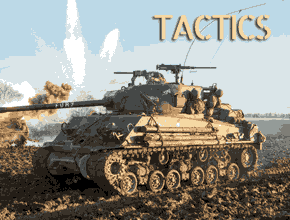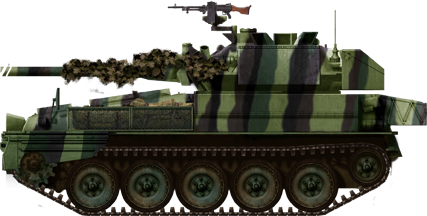
Development History
During the coup in Malaysia in 1948, the British government realized how much it needed light weight vehicles. Transporting there heavy AFV suchg as centurions was a logistical nightmare. Also, the British army at the time lacked light AFVs aparts stock scout cars and armoured cars. No light tanks had been designed witc the prewar Mark VI, now clearly obsolete. So British soldiers fought dismounted with support from armored cars. In emergency were developed the Saladin and Saracen.Already in 1959 was planned a replacement for the Saladin and Saracen, now outdated. Concepts were developed by FVRDE (Fighting Vehicle Research and Development Establishment). The first was the LHMTV (Lightweight High Mobility Tactical Vehicle), and the AVR ( Armoured Vehicle Reconnaissance)aand from 1963-1965, the CVR(T) project for "Combat Vehicle Reconnaissance (tracked)". It was selected and mass produced with a large variety of variants carrying all sorts of armament and tailored for any role.
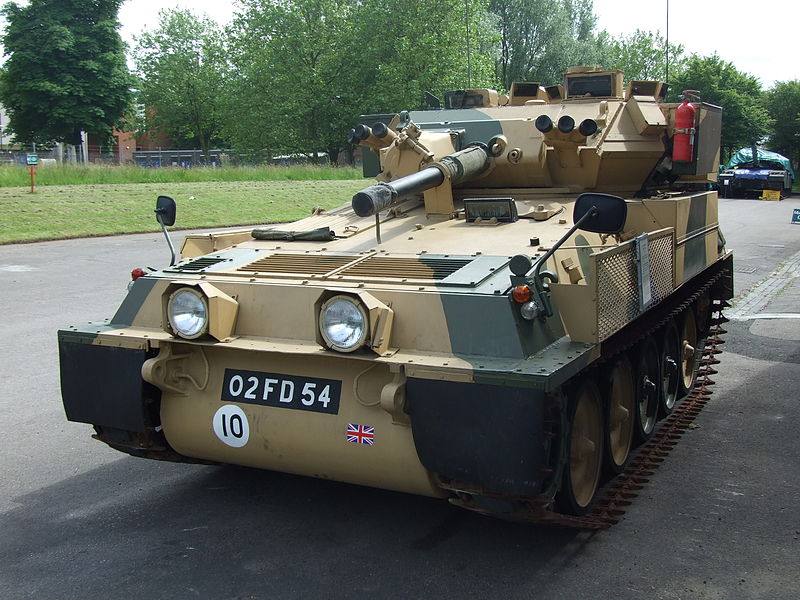
FV101 at Aldeshort Museum
The first prototype of the CRVT came out on January 23rd, 1969 followed by 30 pre-production prototypes, and notably 17 scorpions, the most produced IFV in the family by far. The first scorpion was ready for tests by January 1972, delivered in February 1973 for acceptance trials, and 1,500 followed by Britiosh needs alone, more than 1000 for export. Scorpions were retired from British army in 1994, but after a demand for some countries already customer of the basic Scorpion, it was asked to create a beefier version with real anti-tank capabilities, using the Cockerill 90 mm Mark 3. The Scorpion 90 or Scorpion 2 was born, designed for the export market. Modifications concerned the internal layout of the turret to manage the new gun, and store the larger rounds. Only two customers purchased it so far (see below).
Design
General Layout
The vehiocle, apart the new gun and modifications inside the turret, is the very same Alvis Scorpion, of which 3000 were made from 1973, 1500 exported. It has a crew of 3 (driver forward right, commander and gunner in the turret), weighting 8.7 t combat load for an overall lenght of 5.29 m gun forward, 4.79 m hull alone, width 2.24 m and height of 2.10 m. The commander is located to the right of the gun, with peripheric sights, and the gunner is on the left.Protection
Protection consisted of aluminium armor, 13 mm front and sides (.5 inches). The vehicle is given a collective NBC system. There are autmatic fire extinguishers in the engine bay and transmission as well s in the fighting compartment. For active concealement the vehicle is given two quad 76mm (3 inches) smoke grenade launchers on the turret's forward faces.Mobility
The Chassis type is the same as the original CRVT, a tracked chassis with 5 ruberrized roadwheels with drive sprockets at the front, and idler at the rear, and a ground pressure of 0.37 kg/cm². The Track width is 0.43 m (), the track lenght on the ground is 1.70 m (). The Suspension remained the same, Torsion bar on all axles. The Automotive powerplant is the same Perkins 6-cylinder diesel engine with a power output of 200 hp at 2.700 rpm. It is coupled to a TN15 transmission with 7 speeds forward, 7 rear. There is a main fuel tank of 391 L capacity for a Range of 750 km. Top speed on a road is 73 km/h and turn radius is by standing pivot on the tracks. Power to weight ratio is 22.9 hp/t. Ground clearance is 0.35 m (). The Scorpion 90 is able to climb a 0.5 m tall wall, gap a 2 m trench, a 60% dradient and ford 1.1 m withiut preparation.Armament
The centerpiece is a 90mm Cockerill Mk 3 M-A low pressure gun housed in the turret, stabilized, with 33 ammunitions in store. The mount could elevate -8° to +30°, powered drive. The turret has a traverse of 360°, also electrically powered. It was also given a coaxial armament, on the same mantle and able to fire tracers for quick targeting, a 7.62mm MAG machine gun with 3.000 rounds of ammunitions.The 90mm Cockerill Mark III could fire the following:
APFSDS: muzzle velocity 1210 m/s; projectile mass 2.5 kg; penetration 100 mm RHA @ 60 degree obliquity
HE-T: muzzle velocity 714 m/s; projectile mass 5.1 kg with 1.1 kg of filling;
HEAT-T: muzzle velocity 890 m/s; projectile mass 4.1 kg; penetration 250 mm of RHA @ 0 degree obliquitiy
HESH-T: muzzle velocity 800 m/s; projectile mass 4.5 kg with 1.2 kg of filling
The US verision fires the M620A1 HEATFS (mv 890 ms, 250mm pen.) and M625A1 HESH (mv 800 ms, 102 mm pen.) as well as the M618A1 smoke shell.
CMI Defence Belgium introduced this model in 1986 (1976 Mark I, 1982 Mark II). It is manufactured from a special Electro-Slag Refined (ESR) steel to be lightand the barrelled is topped by an efficient triple-baffle muzzle brake . The Mk III gun has a breech mechanism for recocking in the event of a misfire and had other means (hydroconcentric springs) to reduce recoil forces from 13,000 kg to 8,500 kg with an improved ESR steel to avoid barrel cracking.
Users

 Indonesia: 90 units of the Scorpion 2 type. It is a bit more advanced in optics.
Indonesia: 90 units of the Scorpion 2 type. It is a bit more advanced in optics. Venezuela: 78 Scorpion 90s, 4-6 FV104 Samaritans, 2 FV105 Sultans, 4 FV106 Samsons in complement ordered in 1988 (S$85 MM contract) and all had specific diesel engines with a delivery completed in 1992.
Venezuela: 78 Scorpion 90s, 4-6 FV104 Samaritans, 2 FV105 Sultans, 4 FV106 Samsons in complement ordered in 1988 (S$85 MM contract) and all had specific diesel engines with a delivery completed in 1992.
alvis scorpion 90 specs. | |
| Dimensions | 5.29 m oa x 2.24 x 2.10 m |
| Total weight | 8.7 t combat load |
| Crew | 3 (commander, driver, gunner) |
| Propulsion | Perkins 6-cyl. diesel 200 hp/2.700 rpm, 22.9 hp/t |
| Maximum speed | 73 km/h |
| Transmission | TN15, 7 forward, 7 rear |
| Suspension | 5 roadwheels, Torsion bar |
| Range | Fuel 391 L, 750 km |
| Armament | 90mm Cockerill Mk III (33 rds) 7.62mm MAG coax (3000) |
| Protection | Aluminum 14mm, NBC system, 2x4 76mm smoke grenade launcher |
| Total production | 169 |
Gallery
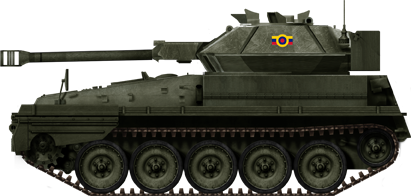
Venezuelian Scorpion 90

Indonesian Scorpion 2

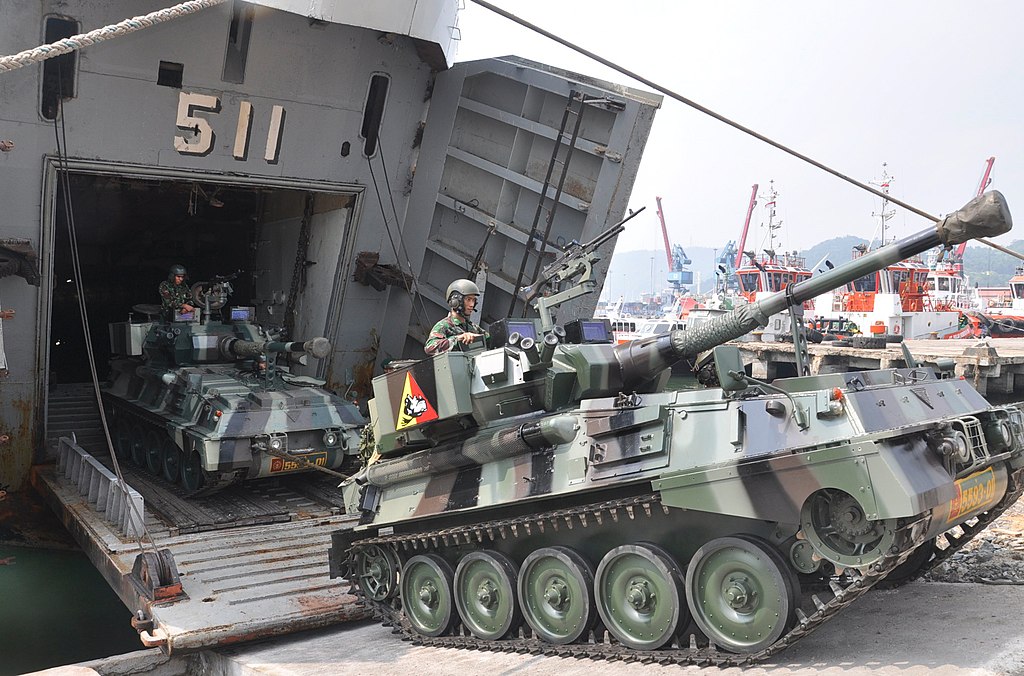
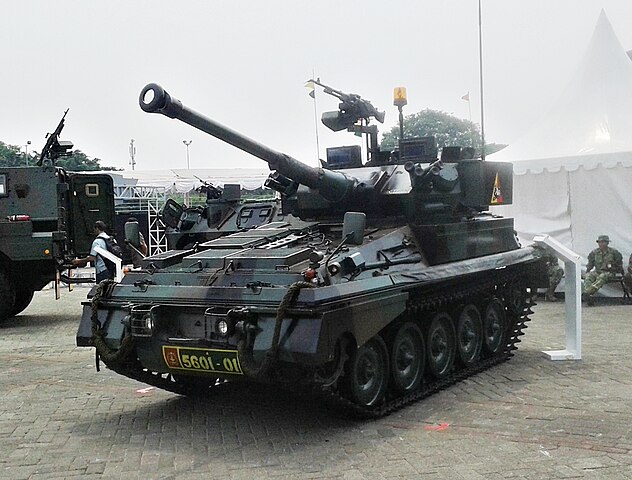
Links on the alvis scorpion 90
weaponsystems.netIndonesian Scorpion 2
shephardmedia.com
armoredwarfare.com
wikipedia.org CRVT
forum.warthunder.com
army-guide.com Cockerill Mark 3
johncockerill.com
FV101_Scorpion

Cold War Tanks


































Cold war tanks posters

Cold War Main Battle Tanks

Cold War Soviet Army
